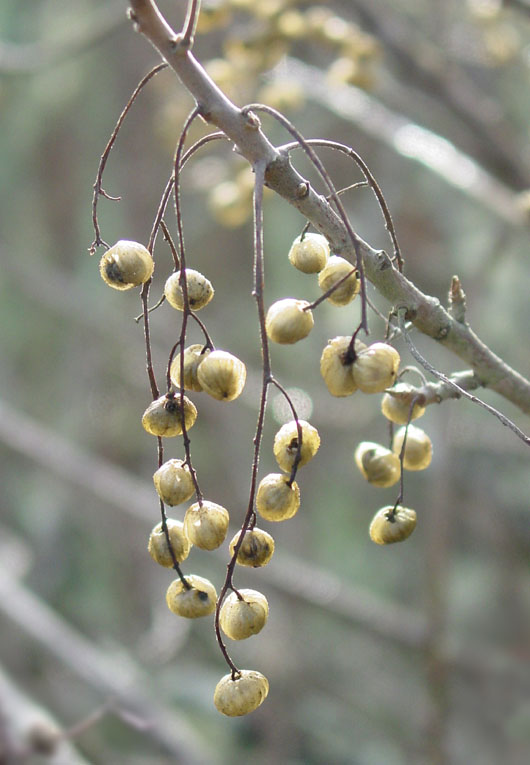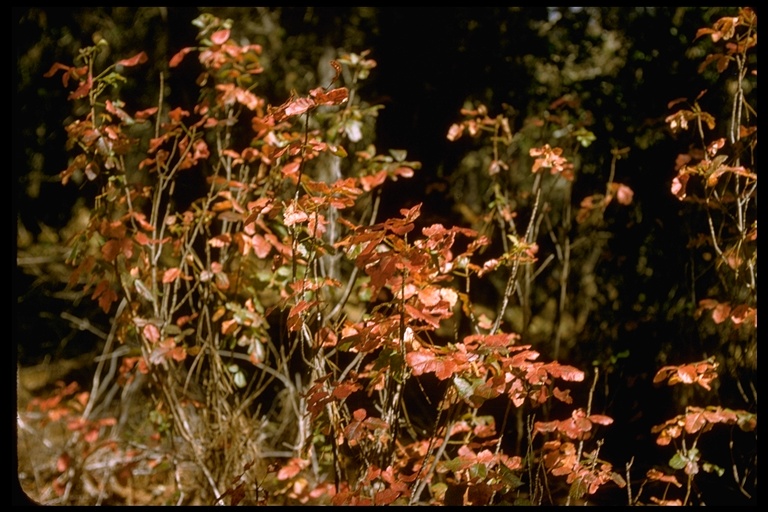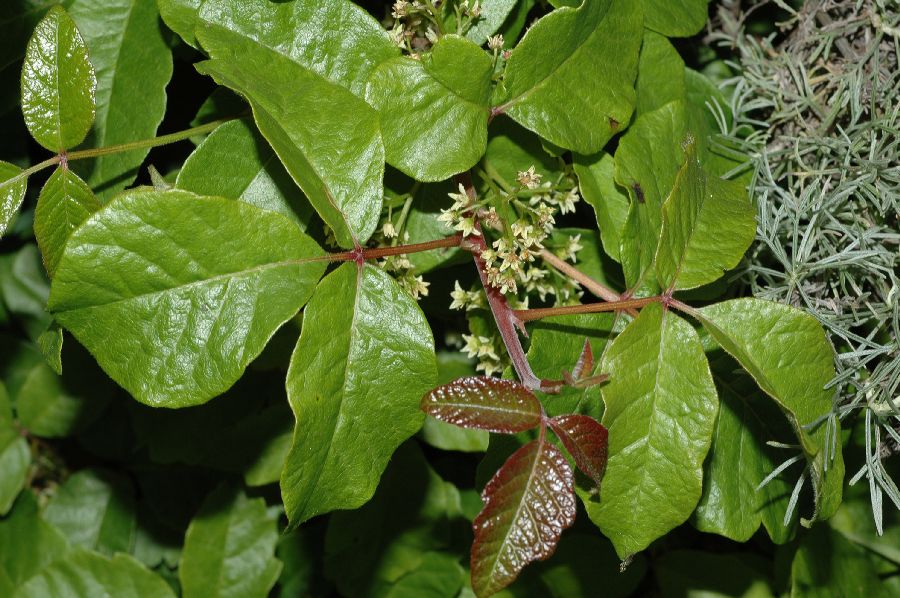Adaptations
Poison…
The Poison Oak's biggest adaptation is obviously the urushiol
poison that it releases when coming into contact with the plant.
Any part of the plant can contain the oils and even the tiniest
amounts can cause an irritating reaction. Urushiol is an oil
that the poison oak releases through resin ducts as soon as the
plant is disturbed or touched the oil is already on you.
It can last up to a week on your clothes, shoes, or other
equipment and the reaction can take a few days to appear.
The poison oak even has the oil present when the plant is dead
making handling even dead plants dangerous. To learn more
about the urushiol poison see Toxicology.
Living conditions…
Poison Oak has also adapted to numerous different environments.
Not only can they live in dry, arid climates such as the
chaparral areas but also in wet, humid areas such as the mixed
evergreen forests. They're found from sea level to around
5,000 ft above sea level.
Reproductive…
The seeds of the poison oak are hard shelled seeds which
protects it while moving through the digestive system of birds
as well as the environment. The mature seeds have a sugary
coating which attracts the birds. Not only does the
coating attract birds as an adaption to spread the seeds around
the environment but the poison urushiol turns to a mild laxative causing
the birds to defecate sometimes as soon as 15mins after
ingesting the seed. Another adaptation related to all
angiosperms is the development of a protecting structure we know
as fruit.

©2002 Margo Bors
Support or no support…
Yet another adaption by the poison oak is its ability to recognize whether to become a shrub or a vine. In a study done by B.L. Gartner who is from the Department of Biological Sciences at Stanford University found that in the presences of support the poison oak plant would grow as a vine and in the absence of support it would grow as a shrub. This is an incredible adaption that we would not think a plant would be capable of determining or accomplishing. With support it has no need to worry about putting energy into building a support system instead it focuses growth upward climbing closer to the sun for photosynthesis.

©2009 Anna Bennett
SHRUB

©1999 California Academy of Sciences
Senses…
The poison oak plant being autotrophic uses internal and
external stimuli to survive. A great example was mentioned earlier
in the vine versus shrub formation. However, the most important
stimuli is that of detecting light. With the ability to detect
light the plant can grow upwards or outwards to maximize its
photosynthetic abilities by exposing the greatest amount of leaves
possible.
